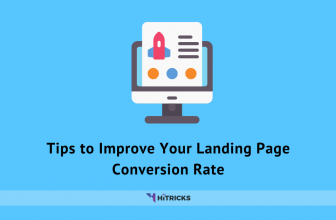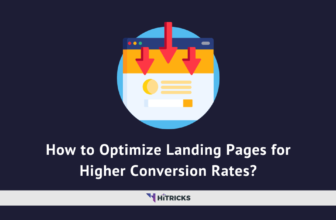When it comes to employee perks, group insurance schemes are positioned as a choice that serves the interests of both employers and their staff. Let’s explore the subtleties of group insurance plans, their intricacies, benefits, and the essential factors that modern-day companies should consider. Here’s an overview:
- Understanding the Core of Group Insurance Plan:
- Ranges of Group Insurance Plan:
- Advantages for Employers:
- Employee Perks:
- Picking the Right Insurance Coverage:
- Essential Factors to Consider:
- Comparing the coverage options:
- Navigate the regulatory landscape:
- Claims processing and reliable support:
- Wellness programs and extra benefits:
- Conclusion:
Understanding the Core of Group Insurance Plan:
Fundamentally, a group insurance policy is a cumulative coverage scheme employers provide to their personnel. This type of insurance gives security to a group of people at a price per person compared to policies. The essential benefit hinges on threat merging, allowing an expense-thorough method to safeguard employees’ health, wellness, and well-being.
Ranges of Group Insurance Plan:
Employee benefits plans commonly include types of group insurance such as wellness, life, special needs, and dental protection to deal with their demands. Each type offers an objective that contributes to an encompassing benefits package that meets various workforce requirements.
Advantages for Employers:
Companies who choose group insurance policies can enjoy several critical benefits. These policies have the potential to improve worker contentment and retention rates, fostering an office atmosphere.
Furthermore, providing insurance policy alternatives can boost a company’s interest in employees throughout the employment procedure. Economically speaking, group insurance typically leads to cost-effectiveness in comparison to strategies positioning it for businesses of various sizes.
Employee Perks:
For workers belonging to a group insurance policy plan, health and wellness, as well as economic safety and security, are exceeded. Group insurance commonly consists of subscription processes and competitive premium prices. It also covers the status quo and offers confidence to employees with health issues.
Picking the Right Insurance Coverage:
Picking the best group insurance coverage strategy calls for a technique. Companies should consider their workforce’s needs, including age, demographics, wellness problems, and family scenarios. Customizing the benefits package ensures that employees obtain insurance coverage that meets their needs and advertising inclusivity and care within the company.
Essential Factors to Consider:
While group insurance coverage plans offer advantages, businesses must navigate the procedure. Comprehending policy terms, insurance coverage restrictions, and exemptions is vital. Routinely evaluating and changing plans to match the altering demands of workers ensures that the advantages bundle remains relevant and vital.
Comparing the coverage options:
When choosing the group insurance plan, it’s essential to compare the coverage options available. Employers need to look at plans provided by insurance companies, comparing aspects like coverage limits, deductibles, co-payments, and network providers. By considering these factors, businesses can ensure they pick a plan that fits their budget and offers coverage for their employee’s needs.
Navigate the regulatory landscape:
Employers need to navigate the environment when setting up a group insurance plan. To avoid penalties and meet the requirements, individuals must adhere to regulations such as the Affordable Care Act (ACA) in the United States or equivalent laws in other areas. Understanding the guidelines surrounding enrollment periods, eligibility criteria, reporting obligations, and tax implications is essential.
Claims processing and reliable support:
Efficient claims processing and reliable support services are elements of a group insurance plan. Employers should assess the insurance provider’s history of processing claims. Also, evaluating the availability and quality of customer support services, including help with claim inquiries and issue resolution, can significantly influence employees’ satisfaction with their insurance benefits.
Wellness programs and extra benefits:
Many group insurance plans come with wellness programs and extra benefits beyond coverage. Employers could offer rewards for healthcare, health checkups, exercise programs for quitting smoking, and mental health assistance. Employers need to assess the quality and impact of these initiatives in enhancing employee wellness and performance, as they have the potential to lower expenses and boost efficiency.
Conclusion:
After diving right into the elements of group insurance coverage, it appears they serve as more than a perk. They play a critical role in nurturing a supportive and steady work environment. Group insurance coverage offers health protection for employees and fosters a favorable business atmosphere, enhancing worker satisfaction and retention.
For businesses aiming to enhance their employee benefit plan or those venturing right into group insurance, it is currently time to do something about it. Assess your workforce requirements, explore the series of insurance coverage selections available, and customize a group insurance policy plan that aligns with your business concepts and your worker’s requirements.
Do not allow the future to determine your choices; proactively appreciate your beneficial assets. Seek assistance from insurance specialists to conduct a study and design a group insurance coverage that reflects your devotion to prioritizing your group’s well-being. Embark on the path towards an encouraged workforce today.
Nirmal Sarkar is a Biotechnologist from the city of Joy, Kolkata. He is the founder of this blog and covers a wide range of topics from Gadgets to Software to Latest Offers. You can get in touch with him via nirmal@hitricks.com







